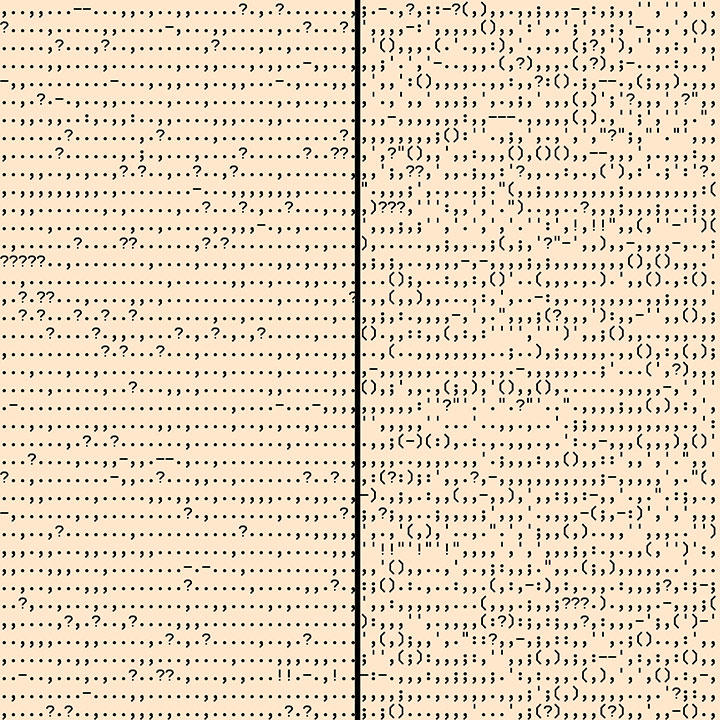
Like traffic signs on the interstate, punctuation marks rarely are appreciated in their own right. Adam Calhoun, a postdoctoral researcher in neuroscience, has discovered that punctuation marks offer intriguing insights into literature — and make for cool art, too.
Calhoun, who studies fruit-fly mating practices by day, has written a few lines of computer code to strip the words from any block of text, leaving behind only the punctuation. He has applied his code to more than a dozen works of literature, ranging from William Faulkner’s Absalom, Absalom! to Cormac McCarthy’s Blood Meridian. The project began as an effort to find something visually interesting to hang on his wall.
“I wondered what did my favorite books look like without words,” Calhoun wrote in a February blog post for Medium.com. “Can you tell them apart, or are they all a mush? In fact, they can be quite distinct.” Ernest Hemingway’s A Farewell to Arms, for example, contains almost no commas, just periods and quotation marks.
What does any of this mean? Calhoun admits that he isn’t sure, though he hopes to examine how punctuation usage varies between authors, genres, and eras. For now, it’s still a hobby. And he says he is still looking for just the right poster for his wall.












0 Responses